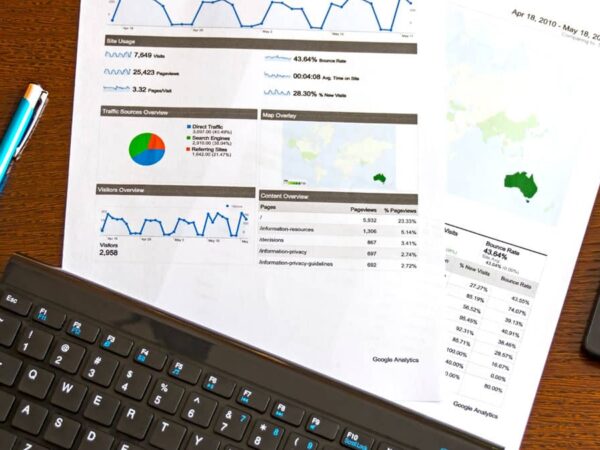What Is Revenue in Business and Why It Matters for Profitability
Small businesses — which make up 99.9% of all U.S. businesses — live and die by their financial numbers.

As a hardworking business owner, you might often ask yourself: Are my strong sales actually translating into real profit? It’s easy to get excited about seeing money come in, but understanding what revenue truly is (and how it differs from profit) is crucial for the long-term health of your company. In fact, financial missteps like confusing revenue with profitability can be costly. Poor cash flow management is cited in 82% of business failures, underscoring that knowing your numbers isn’t just an accounting exercise – it’s a survival skill.
Key Takeaways:
- Revenue ≠ Profit — Know the Difference
Revenue is the total money earned from sales before expenses. Profit is what’s left after all costs are paid. Don’t confuse high sales with financial success. - Revenue Fuels Profit, But Costs Decide the Outcome
Strong revenue only helps if your expenses are under control. Many businesses fail because they grow sales but ignore rising costs or shrinking margins. - Recurring and Diversified Revenue Builds Stability
Not all revenue is created equal. Subscription models, service contracts, and multiple income streams offer more predictability and resilience during slow periods. - Smart Revenue Growth = Quality Over Quantity
Chasing every dollar can backfire. Focus on profitable customers and avoid low-margin work that drains resources without real returns. - Track, Test, and Tweak Your Pricing
Your pricing strategy directly impacts revenue and profit. Use tools like bundling, dynamic pricing, and seasonal adjustments to increase income without adding risk.
To run a profitable business, you need a clear grasp of revenue, profit, and how they work together. This article will break down what revenue means in business, why it matters for your profitability, and how to leverage revenue insights for smarter decision-making. We’ll use everyday language, real-world examples (from food trucks to construction firms), and a conversational tone to make these financial concepts easy to digest. By the end, you’ll see how understanding revenue versus profit can guide you in boosting your income strategically – without falling into common traps that hurt your bottom line.
“Revenue is vanity, profit is sanity, and cash flow is king.” -Verne Harnish
What Is Revenue in Business?
In simple terms, revenue is the total income your business earns from the sale of goods or services before any expenses are taken out. It’s often called the “top line” because it’s the first line at the top of your income statement. In accounting, revenue is the total amount of income generated by your company’s primary operations. Whether you run a food truck selling tacos or a construction company building homes, all the money you collect from customers for your products or services is your revenue.
Think of revenue as the fuel for your business engine. It’s the gross inflow of cash from your customers. For example, if your trucking business hauls freight for a client and charges $5,000 for the job, that $5,000 is your revenue from that delivery. If a professional services firm (like an accounting or consulting business) bills clients $200 per hour and works 10 hours, the $2,000 earned is revenue. It’s all the money coming in from normal business activities.
Key characteristics of revenue:
- Generated from core operations: Revenue comes from what your business primarily does (e.g., selling construction materials, food truck sales, freight delivery contracts, consulting fees). Money from other sources (like selling an old van or earning interest on a bank account) isn’t usually counted as operating revenue.
- Recorded before expenses: When you tally up revenue, you haven’t subtracted any costs yet. It’s a gross figure. This is why revenue alone doesn’t tell you how much you actually keep – that’s where profit comes in (more on that soon).
- Can be one-time or recurring: Some revenue is one-off (a single big construction project payout), while other revenue is recurring (a monthly retainer from a consulting client or weekly sales at a farmers market). We’ll discuss different revenue models in a moment.
- Often measured over a period: Businesses measure revenue for a given period like a month, quarter, or year. For instance, you might say, “Our food truck made $100,000 in revenue this year.”
Importantly, revenue is not the same as cash flow, though they’re related. Revenue might be recorded when a sale is made, even if the cash hasn’t yet reached your bank (for example, if you invoice a client to pay in 30 days). Cash flow is about the timing of cash in and out, whereas revenue is about the total amount earned. This distinction matters because you could have healthy revenue on paper but still run into cash flow problems if payments come in slowly.
Example: Imagine a construction company lands a $500,000 contract to build a house. That contract adds $500,000 to the company’s revenue. However, the company will have to spend money on lumber, concrete, wages, and permits to get the job done. The revenue figure of $500,000 sounds great, but we need to see the costs to know if the project is truly profitable.
Revenue vs. Profit: Key Differences
It’s not enough to have high revenue; you also need profit. Profit is what you get to keep after all the bills are paid. If revenue is the top line of your income statement, profit is often called the “bottom line.” Here’s the difference in a nutshell:
- Revenue (Sales) – The total incoming money from customers before expenses. It’s your gross earnings.
- Profit (Net Income) – The remaining outgoing money you keep after subtracting all expenses (cost of goods, salaries, rent, fuel, etc.) from revenue. It’s your net earnings.
In formula form:
Profit = Revenue – Expenses
There are actually different levels of profit (gross profit, operating profit, net profit), but for simplicity, when we say “profit” here, we mean what’s left after all expenses. Let’s break down the differences with a quick example from a food truck business:
- Revenue: All sales from the food truck. Say in a day you sell 100 tacos at $3 each and 50 burritos at $5 each. Your total revenue that day = (100 * $3) + (50 * $5) = $650.
- Expenses: The costs to run the truck for the day – e.g., ingredients ($200), fuel ($50), staff wages ($150), permit fees ($20). Total expenses = $420.
- Profit: Revenue ($650) minus Expenses ($420) = $230. This $230 is your profit (the money that actually stays in your business).
In this example, revenue was almost three times the profit. This shows why knowing the difference matters. A less experienced owner might think, “I made $650 today!” but in reality, only $230 is profit that can be reinvested or taken home. The rest went right back out to cover costs.
“Without profit, high revenue is just a lot of work for nothing.” -Unknown
This quote rings true for many entrepreneurs. It’s possible (and sadly common) for a business to have growing revenue but still be unprofitable. For instance, a trucking company might bring in $100,000 in revenue in a month from deliveries but if $90,000 goes to fuel, driver pay, maintenance, and insurance, the profit is only $10,000. And if they miscalculate costs or run into delays, that profit can vanish or turn into a loss.
Why the distinction matters for decision-making: Understanding revenue vs. profit helps you price your products correctly, plan for expenses, and set realistic growth targets. If you only chase revenue (e.g., taking on lots of new sales at slim margins), you might find yourself working harder without seeing better returns. On the other hand, if you only focus on cutting costs to boost profit, you might starve your business of the investment it needs to grow its revenue. A healthy business keeps an eye on both – growing revenue and managing expenses to maximize profit.
Why Revenue Matters for Profitability
Revenue is often called the “lifeblood” of a business – without sales coming in, you can’t cover costs or make a profit. Simply put: no revenue, no business. It’s the starting point for everything. But revenue isn’t just about survival; it’s about potential. High revenue gives you the potential to earn higher profits, if you manage your costs well. Here’s why revenue is so important for your profitability and overall success:
1. Covering Fixed Costs: Every business has fixed expenses (rent, insurance, loan payments, salaries) that have to be paid regardless of sales. You need a baseline amount of revenue just to break even – that is, cover all your costs. Only after you pass the break-even point does each new sale start contributing to profit. Knowing your required revenue to break even each month is a powerful insight.
For example, if your professional services firm knows it must earn $10,000 in revenue monthly to pay all bills, you have a concrete target to exceed for profit.
2. Economies of Scale: In many cases, as revenue grows, certain costs don’t rise as fast, which can boost profit margins. For instance, a food truck that doubles its sales might only see a small increase in costs like fuel or staffing (if you can handle more sales in the same hours). More revenue can spread out fixed costs, making each dollar earned more profitable. So increasing revenue can increase profitability up to a point – but only if costs are kept in check.
3. Reinvesting for Growth: Strong revenue provides cash that can be reinvested in the business to fuel further growth. This might mean buying better equipment, hiring an extra worker to serve more customers, or marketing to reach a bigger audience. These investments, when done wisely, can create a cycle where revenue growth leads to profit growth.
For example, a construction business with growing revenue might invest in a second crew or better tools, allowing it to take on more projects and increase profits down the line.
4. Buffer for Tough Times: Healthy revenue streams create a cushion. Not every month will be stellar – maybe a trucking company has a slow season or a professional services firm loses a client unexpectedly. If you’ve had strong revenue (and banked some of the profits), you can weather downturns without panicking. In contrast, if revenue is always just barely covering costs, one hiccup can put you in the red.
However, revenue only leads to profitability if managed correctly. It’s possible to increase revenue in ways that actually hurt profitability. For example, slashing prices might boost sales (revenue) but if you cut too deep, your profit on each sale drops. Selling $1,000 worth of product is not good for profitability if it costs you $900 to produce and deliver that product and another $150 in marketing to sell it (you’d be losing money despite “high sales”).
This is why smart business owners pay attention to profit margins (profit as a percentage of revenue). If your revenue grows but your profit margin shrinks, you might end up no better – or worse – than before. A balanced approach is key: you want to grow revenue strategically, in ways that either maintain or improve your profit margins. In the next sections, we’ll look at different ways to generate revenue and how to boost it without hurting your bottom line.
Types of Revenue and Business Models
Not all revenue is earned in the same way. Different businesses have different revenue models – basically, the methods by which they make money. Understanding what category your revenue falls into can help you manage it better and find opportunities to diversify. Here are some common types of revenue and models, with examples relevant to many small businesses:
- Product Sales: Selling a physical product for a price. Example: A construction supply company selling lumber and tools, or a food truck selling meals. Each sale is a one-time transaction, though you hope for repeat customers.
- Service Fees: Earning revenue by providing services. Example: A professional services firm like an accounting agency charges fees for preparing taxes, or an independent trucker gets paid per delivery. These can be one-off jobs or ongoing service contracts.
- Subscription or Recurring Revenue: Customers pay regularly (weekly, monthly, yearly) for continued access or service. Example: A consultant offers a monthly retainer package for ongoing advisory services, or a trucking company secures a year-long contract to make regular deliveries. This model gives stable, predictable revenue.
- Project-Based Contracts: Common in construction and creative services, where a specific project (building a house, designing a website) has a defined payment. Revenue comes in milestones or upon completion. It’s high when a project lands, but can be irregular.
- Transaction Commission: Earning a cut from facilitating a sale. Example: A small brokerage service that connects truckers with clients might take a commission per match. Or a food delivery partner takes a fee for each order delivered for restaurants.
- Licensing and Royalties: Less common for small businesses, but includes renting out your assets or intellectual property. Example: A food truck owner trademarks a special sauce recipe and licenses it to a condiment company, earning royalty revenue.
- Diversified Streams: Many small businesses blend revenue models. For instance, a food truck might primarily have product sales (food items) but also earn a fee for a cooking class on weekends (service revenue) or sell branded merchandise like t-shirts (product revenue) on the side.
Diversifying your revenue streams can make your business more resilient. If one stream slows down, another can pick up the slack. For example, if bad weather hurts a food truck’s street sales, catering private events or delivering meals to offices could provide alternative revenue. If a construction company usually does new home builds (project-based), it might also do renovations or maintenance contracts to keep revenue coming in between big projects.
Industry-specific insights: Different industries often favor certain revenue models:
- Construction: Project-based revenue is king. Successful construction firms often bid on multiple projects and might also have maintenance service contracts to create recurring revenue.
- Food Trucks: Mostly direct product sales (food items), possibly supplemented by event catering (contract service) or online sales of branded sauces/merchandise.
- Trucking: Typically contract-based (service fees per delivery or per mile). Some trucking businesses diversify by warehousing goods for clients (storage fees) or leasing out trucks when not in use.
- Professional Services: Often time-based billing (hourly fees) or project fees. Many are moving to subscription-like models (monthly retainers or packages) to stabilize income. For instance, an IT consultant might offer a flat monthly fee for on-call support – a predictable revenue source.
By identifying your current revenue model(s), you can ask crucial questions: Is my revenue mostly one-off transactions? Could I introduce a recurring element for stability? Am I too reliant on one big client or project?
The goal is to ensure you have the right mix of revenue sources that align with your business capabilities and market demand. Diversification should be strategic – each new revenue stream should leverage your strengths and serve your customers, not distract you from your core business.
How to Increase Revenue (Without Sacrificing Profit)
Every business owner wants to see revenue grow. The key, however, is to grow revenue in a way that also grows profit. It’s not about simply selling more at all costs – it’s about selling smarter. Here are several practical strategies to boost your revenue strategically, so your profits can grow alongside your sales:
- Optimize Your Pricing (and Consider Dynamic Pricing): Pricing is one of the most powerful levers for revenue. Small tweaks can have a big impact. Research what your market will bear – you might find you can charge more for the value you provide. For example, a trucking company can implement a fuel surcharge when gasoline prices spike, ensuring delivery revenue keeps up with costs. Similarly, a food truck could charge a bit more at a popular festival than on a regular weekday, an example of dynamic pricing. Dynamic pricing means adjusting your prices based on demand, time, or other factors (like how airlines charge more during holidays). Even small businesses can use this concept: think of happy hour discounts (time-based pricing) or peak season surcharges. The goal is to maximize what customers are willing to pay without scaring them off. Just be sure to communicate value – customers don’t mind paying a bit more if they feel it’s worth it.
- Increase Sales Volume Through Marketing and Better Customer Targeting: Another way to grow revenue is simply to sell more units or get more clients. Smart marketing can help reach new customers or remind existing ones to buy again. Focus on high-impact marketing – for example, if you’re a professional service provider, maybe attending one industry networking event brings in two new clients worth $5,000 each. That’s a great return. Digital marketing (social media, local SEO, email newsletters) can be cost-effective ways to boost sales. Always track the cost of marketing campaigns against the revenue they generate to ensure your profit isn’t being eaten by customer acquisition costs.
- Upsell and Cross-sell: It’s often easier to get an existing customer to buy more than to find a brand new customer. Think about what else you can offer to someone who’s already buying from you. If you run a food truck, could you offer add-ons (extra guacamole for $1, a drink combo) to increase the average sale? If you have a construction business building a home, could you also sell the landscaping services at the end, or home maintenance packages for after the build? These tactics increase revenue per customer. Importantly, they usually have lower marketing costs (since the customer is already there) and can have good profit margins.
- Diversify Your Offerings (Carefully): We mentioned diversified revenue streams earlier – here is where you put it into action. Look for related products or services that complement what you already do well. A trucking company might invest in a small warehouse to offer short-term storage (earning storage fees). A professional photographer might start selling prints or preset filters online for extra income beyond client shoots. The caution here is to ensure any new offering has a clear profit potential and doesn’t overextend your resources. Pilot test new ideas on a small scale and measure the profitability. If, for example, a food truck tries selling merchandise but finds the hassle and costs too high, it might drop that and try something else like weekend catering gigs which have better margins.
- Improve Customer Experience to Drive Repeat Business: Happy customers lead to repeat sales and positive word-of-mouth (free marketing!). Invest in customer service and quality improvements that encourage loyalty. For instance, a professional services firm could implement a quick turnaround guarantee or personalized follow-ups, making clients more likely to stick with a monthly retainer. A construction company that communicates well and finishes projects on time will get referrals, effectively increasing future revenue without extra marketing spend. Repeat business is revenue that often comes with lower costs, thus higher profit.
- Leverage Technology and Data: Use modern tools to analyze your sales data and customer behavior. Sometimes, simply analyzing which of your products or services have the highest profit margin and pushing those can increase overall profit. Revenue management isn’t just for big companies – even a small hotel or trucking business can use software to identify trends (e.g., which routes or rooms yield the most revenue) and adjust focus accordingly. For example, if data shows your food truck sells out of burritos by 1PM but has leftover tacos, you might adjust how much of each you prepare or tweak pricing. If your consulting service packages show that a mid-tier package sells the best, maybe highlight that one more in your marketing.
Keep an eye on costs: As you apply these strategies to grow revenue, remember the other side of the coin: expenses. For each initiative, consider the cost involved and ensure it’s justified by the potential revenue boost. For instance, a new marketing campaign might bring $10,000 in sales but if it costs $9,000 to run, the profit gain is small. Aim for strategies where the incremental cost of getting the extra revenue is low, so most of that new revenue turns into profit. Dynamic pricing, upselling, and improving customer retention are often high-impact, low-cost moves.
Finally, involve your team in revenue-boosting ideas. Your employees on the front lines (be it sales staff, drivers, or servers) often have great insights into what customers want and where the opportunities are. Creating a culture where everyone is aware of revenue goals and profitability can generate innovative ideas and a collective drive to achieve them.
Managing Revenue and Pricing for Optimal Profit
Generating revenue is one thing; managing it effectively is another. Revenue management is about using data and strategy to sell the right product to the right customer at the right time, for the right price – a concept borrowed from industries like airlines and hotels. While that sounds very corporate, small businesses can apply scaled-down versions of these principles too:
- Monitor Your Revenue Metrics: Keep a close eye on metrics like monthly revenue, year-over-year growth, average transaction value, and customer acquisition cost. If you notice your revenue growing but at a slowing rate, it might be a sign to refresh your marketing or introduce something new. If revenue spikes, try to understand why (seasonality, a successful promo, etc.) so you can repeat it. Regular monitoring helps catch issues early – like a dip in sales for a particular product or region – so you can respond quickly.
- Seasonal and Peak Pricing: Many small businesses have seasonal trends. A landscaping company has more business in summer; a tax preparer is swamped before April. Plan your pricing and promotions around these cycles. You might charge premium rates during peak season when demand is high (because your time is at a premium), and offer discounts or special packages in the slow season to attract customers. This way, you maximize revenue when you know business will be brisk and still generate income when things are quiet.
- Dynamic Pricing Tools: Consider using simple tools or software for dynamic pricing if applicable. For example, ride-sharing and delivery apps use dynamic pricing constantly. If you sell products online, there are services that can adjust your prices based on competitor pricing or stock levels. If you run a small bed-and-breakfast, you might increase room rates when a local festival drives up demand. The idea is to not leave money on the table during high-demand periods.
Tip: Always be transparent and fair with pricing changes – you want to avoid alienating loyal customers. Dynamic pricing should feel like a win-win (e.g., discounts when demand is low, available premium options when demand is high). - Offer Bundles or Packages: Bundling can increase revenue per sale by encouraging customers to buy more. A professional service provider might offer a bundle of services at a slight discount versus each individually, which can entice clients to spend more overall. A food truck could sell a “meal deal” (entree + drink + dessert) at a value price that is higher than most single orders but feels like a good deal to the customer. Bundles can also help move less popular items by pairing them with favorites.
- Regularly Review Pricing and Costs: Markets change – your pricing should adapt. At least once or twice a year, review if your prices are still appropriate. Have supplier costs gone up (squeezing your margins)? Has your competition changed their pricing? Also, consider the value you’ve added over time. If you’ve invested in better service or quality, you might justify a price increase. Many business owners fear raising prices, but if done gradually and with clear value, it can significantly boost your revenue without a proportional increase in costs (thus improving profit). Even a 5% price increase, if your volume holds steady, directly increases revenue and profit margin on each sale.
Remember, revenue management is ultimately about being proactive. Instead of just accepting whatever sales come in, you actively shape your sales through pricing strategies, product mix, and timing. This level of control can significantly improve both your total revenue and the portion of it that ends up as profit.
Common Revenue Traps (and How to Avoid Them)
Growing your revenue and business sounds great, but there are pitfalls to beware of. Many entrepreneurs have run into trouble by chasing revenue in ways that backfire. Here are some common revenue-related traps and how you can avoid them:
- Chasing Unprofitable Revenue: As strange as it sounds, not all revenue is good revenue. If you land a big sale that has razor-thin margins (or worse, a loss), it can actually harm your business. For example, a construction company might win a bid for a huge project by underquoting to beat competitors, only to find that after costs, the project barely breaks even. The team is tied up for months with no profit to show. Avoid it: Always calculate the true cost of fulfilling a sale. Know your minimum acceptable margin. It’s okay to turn down or rethink a deal that doesn’t make financial sense. Sometimes saying “no” to a low-profit job frees you up to find a better one.
- Over-Discounting and Price Wars: Competing on price alone is a dangerous game. Sure, a lower price can win you customers and bump up revenue short-term, but it can also erode your brand’s perceived value and eat your profit. If a food truck keeps undercutting others by selling $1 tacos, it might sell a ton but struggle to pay the bills. Avoid it: Compete on value, not just price. If you do offer discounts, make them strategic and time-limited (like a grand opening sale, or a volume discount for large orders that still preserves profit per unit). Always run the numbers to see how a lower price will affect your profit per sale and how much more volume you’d need to make up for it.
- Ignoring Cash Flow Timing: You might have solid revenue and decent profit on paper, but if the cash comes in slowly, you can hit a crisis. This often happens in businesses where customers pay on credit terms (common in B2B). You might deliver $50,000 of services this month (recording revenue), but if those clients take 90 days to pay, your bank account could run dry while you’re waiting. Avoid it: Implement good invoicing practices, consider deposits or milestone payments for big projects, and keep an eye on accounts receivable aging. Ensure you have enough working capital or a line of credit to bridge cash gaps. Remember that statistic: 82% of small businesses fail due to cash flow issues. Avoid becoming part of that number by aligning your revenue and cash collection closely.
- Overexpansion in Pursuit of Revenue: Growth requires investment, but overexpanding too fast can sink you. Say a trucking company sees an opportunity and buys five new trucks on loans to increase routes because they anticipate higher demand. If that demand doesn’t materialize quickly, they’re stuck with huge expenses (loan payments, insurance, additional staff) without the revenue to cover it. Avoid it: Grow step-by-step and validate demand before major expansions. Pilot new locations or product lines when possible. Keep fixed costs manageable and consider renting or leasing instead of buying outright in early stages of expansion. Ensure every major expense aimed at boosting revenue has a backup plan or can be scaled down if needed.
- Neglecting Quality for Quantity: In the rush to increase revenue, quality can slip. A professional services firm taking on too many clients might start delivering subpar service, causing client churn (and revenue drop). A restaurant adding a bunch of new menu items to attract more customers might overstretch the kitchen and hurt the quality of their core dishes. Avoid it: Maintain your standards. It’s better to have slightly lower revenue with happy customers than high revenue for a short burst followed by a reputation hit. Satisfied customers lead to sustainable revenue through repeat business and referrals, which are highly profitable.
- Not Tracking Profit per Revenue Stream: If you have multiple products or services, some will likely be more profitable than others. If you only look at total revenue, you might pour effort into a popular product that’s actually low margin, while neglecting a smaller-volume service that has a high margin. Avoid it: Break down your revenue and expenses by category or product line. This can reveal insights like “Our trucking deliveries for X industry bring in 40% of revenue but 60% of profit, whereas Y industry deliveries bring 30% of revenue but only 10% of profit due to longer distances and higher fuel use.” Armed with that info, you can adjust your focus to pursue the most profitable revenue.
“Don’t just grow revenue, grow quality revenue – sales that strengthen your business rather than stretch it thin.”
By being aware of these pitfalls, you can make smarter decisions as you grow. The theme across all these points is strategic awareness: know the impact of each dollar of revenue on your overall business health. When in doubt, run the scenario by the numbers (even a rough back-of-the-envelope calculation) and consider the worst-case outcomes. It’s this kind of prudent planning that separates hustling harder from hustling smarter.
Aligning Revenue with Profit for Lasting Success
Understanding revenue in business and why it matters for profitability isn’t about becoming an accountant – it’s about becoming a more informed, resilient business owner. When you know exactly what revenue is and how it flows through your business to become profit, you gain control over your company’s story. You can set realistic goals, avoid nasty surprises, and seize opportunities with confidence.
Remember that revenue is the means, and profit is the end. A savvy entrepreneur keeps them in balance: driving sales and income while minding expenses and efficiency. It’s not an either/or proposition – you need both healthy revenue and healthy profit to thrive. The good news is that with the right strategies, it’s absolutely achievable.
As you plan your next steps — whether it’s budgeting for the next quarter, considering a new product line, or seeking a loan to expand — use what you’ve learned about revenue and profit to make the call. Ask yourself: How will this decision impact my top line? And what about my bottom line? When you frame your choices this way, you’ll be aligning every move with your profitability goals.
In practical terms, this might mean setting a revenue target for the year and a profit margin target to go with it. It could mean reviewing your pricing strategy or negotiating better rates with suppliers to improve margins. It certainly means keeping good financial records and reviewing them regularly – your income statement is your friend, not just a tax document.
Running a small business is hard work, but mastering these financial basics turns on the headlights, so you’re not driving blind. With a clear view of how revenue feeds into profit, you can steer your business through challenges and towards opportunities. Here’s to your business growth and prosperity – may your top line be ever-growing and your bottom line ever-strengthening!









